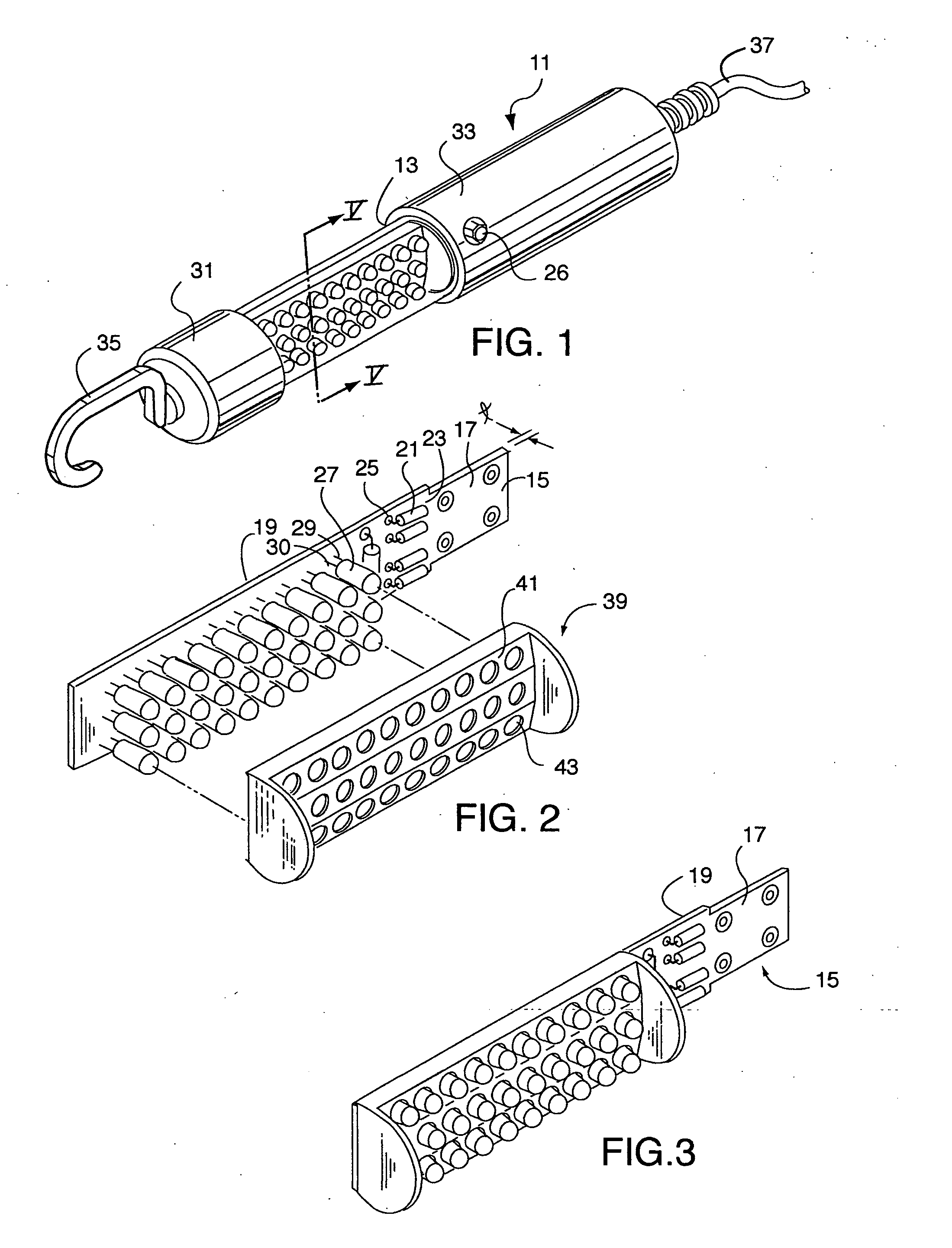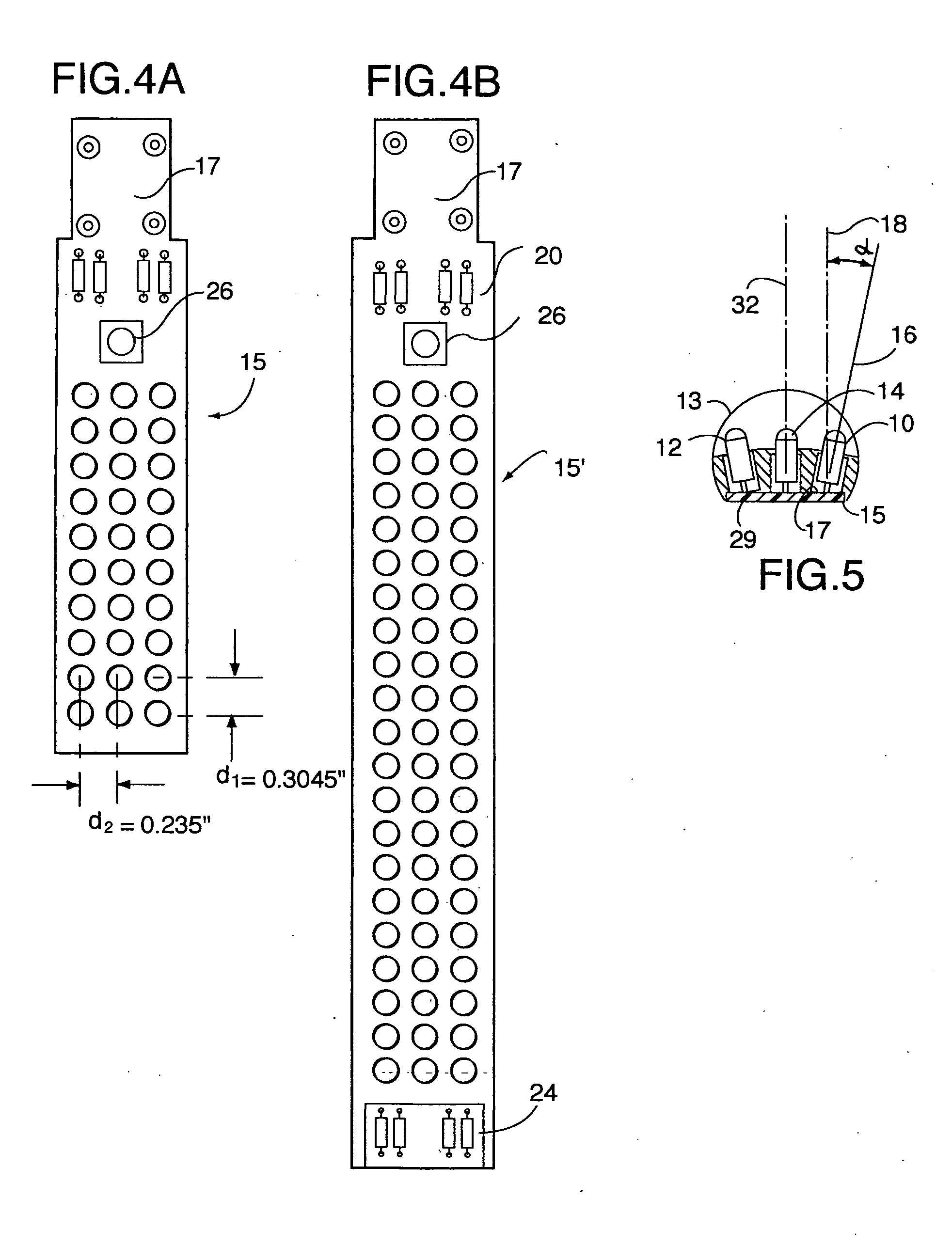LED lighting array for a portable task lamp
a task lamp and led technology, applied in the direction of lighting and heating apparatus, lighting support devices, printed circuit non-printed electric components association, etc., can solve the problems of limited life and a narrow focus, fluorescent lighting strips, electrical inefficiency, etc., to maximize the efficiency of disk flux, maximize led intensity, and light weight
- Summary
- Abstract
- Description
- Claims
- Application Information
AI Technical Summary
Benefits of technology
Problems solved by technology
Method used
Image
Examples
Embodiment Construction
[0034]Turning to FIG. 1, there is shown an LED task light assembly designated generally as 11. The task light assembly 11 includes a rigid hollow tube 13 (FIGS. 1 and 5) that is either transparent or translucent having appropriate light transmitting optical characteristics. The material of the hollow tube 13 is preferably a suitable plastic or acrylic commercially available formulation such as a rugged and optically clear polycarbonate, polyethylene, polypropylene or polyvinyl chloride. Acrylics or polycarbonates are found to be suitable materials as they are both transparent and basically rigid and have the structural integrity necessary for the application. The tube is cylindrically shaped and has a length which is selected based upon on its practical intended use. For example, in the case of a light having an overall length of about 10 inches, the tube can be about 3½ inches in length and about 1½ inches in diameter.
[0035]As shown in FIG. 1, the rigid hollow tube 13 has disposed ...
PUM
 Login to View More
Login to View More Abstract
Description
Claims
Application Information
 Login to View More
Login to View More - R&D
- Intellectual Property
- Life Sciences
- Materials
- Tech Scout
- Unparalleled Data Quality
- Higher Quality Content
- 60% Fewer Hallucinations
Browse by: Latest US Patents, China's latest patents, Technical Efficacy Thesaurus, Application Domain, Technology Topic, Popular Technical Reports.
© 2025 PatSnap. All rights reserved.Legal|Privacy policy|Modern Slavery Act Transparency Statement|Sitemap|About US| Contact US: help@patsnap.com



